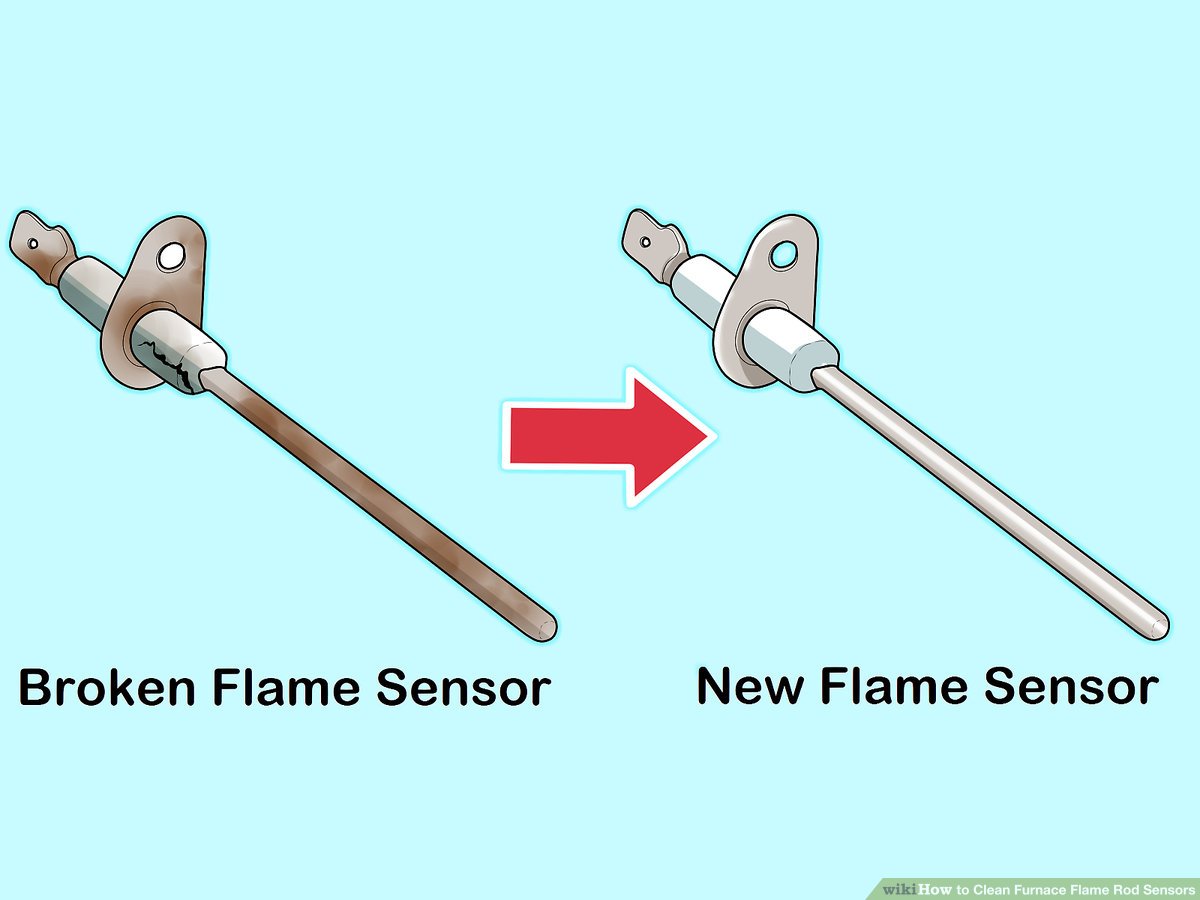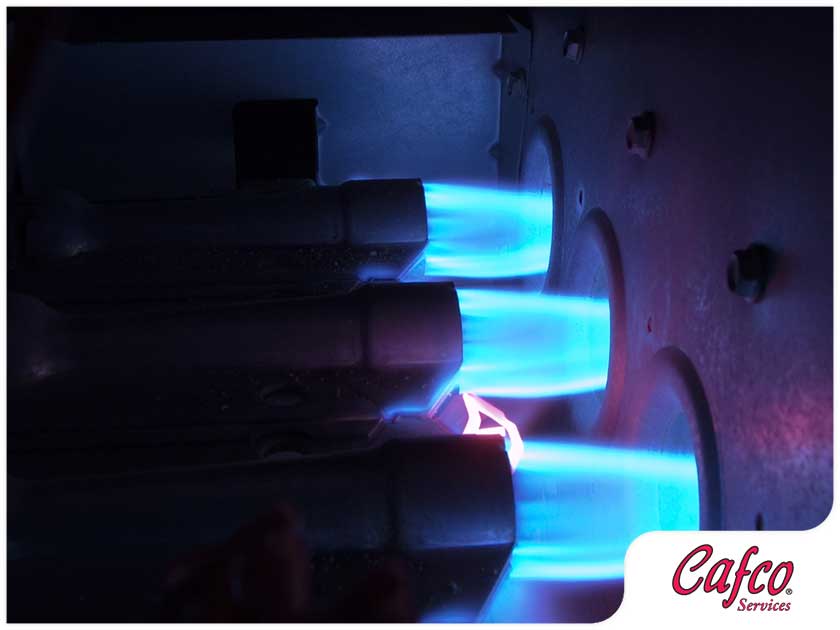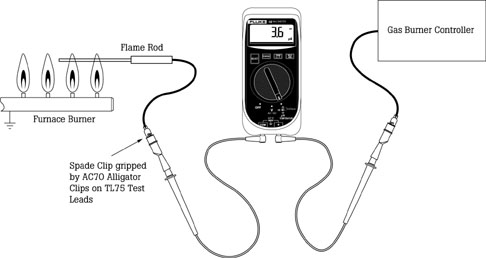To tell if a flame sensor is bad, check for soot or carbon buildup on the sensor. A faulty flame sensor may cause the furnace to cycle on and off frequently.
Is your furnace acting up and you suspect a bad flame sensor might be the cause? The flame sensor plays a crucial role in maintaining a safe and efficient operation of your furnace. It detects the presence of a flame and signals the furnace to continue operating.
If the flame sensor is not functioning properly, it can lead to issues like the furnace turning on and off frequently, reducing the heat output, or even shutting down unexpectedly. Understanding how to identify a faulty flame sensor can help you troubleshoot and address the issue promptly, ensuring your furnace operates smoothly and safely.


Credit: www.cafcoservices.com
Common Signs Of A Faulty Flame Sensor
Faulty flame sensors can lead to various issues in your heating system. Recognizing the signs of a bad flame sensor can help you address the problem promptly.
Frequent Ignition Failures
Frequent ignition failures indicate a possible issue with the flame sensor. The sensor is responsible for confirming the presence of a flame. Without this confirmation, the system may shut down, causing ignition failures.
Short Cycling
Short cycling is another common symptom of a bad flame sensor. This occurs when the furnace turns on and off rapidly. A malfunctioning flame sensor may not detect the flame properly, leading to short cycling.

Credit: www.deppmann.com
Importance Of Regular Maintenance
Regular maintenance is crucial for the efficient functioning of your HVAC system. A faulty flame sensor can lead to improper heating and potential safety hazards. Look out for signs like frequent cycling or no heat to identify if your flame sensor needs attention.
Regular inspection and cleaning can help prevent issues and ensure your system runs smoothly.
Preventing Safety Hazards
Regular maintenance of the flame sensor ensures safe operation of your furnace.
Ensuring Furnace Efficiency
Proper maintenance helps your furnace operate efficiently, reducing energy consumption.
Importance Of Regular Maintenance:
Regular maintenance of your furnace is crucial to prevent safety hazards and ensure optimal efficiency. Maintaining the flame sensor is vital to the safe and efficient operation of your heating system.
Step-by-step Guide To Checking The Flame Sensor
Are you experiencing issues with your furnace? A malfunctioning flame sensor could be the culprit. Fortunately, you can easily check if the flame sensor is the problem. In this step-by-step guide, we’ll walk you through the process of checking the flame sensor, allowing you to diagnose and potentially resolve the issue on your own.
Turn Off The Furnace
Before you begin inspecting the flame sensor, ensure the furnace is turned off to avoid any potential accidents. Locate the power switch on your furnace and switch it off to cut the power supply.
Locate And Inspect The Flame Sensor
Once the furnace is safely switched off, locate the flame sensor. In most furnaces, the flame sensor is positioned near the burner. Carefully remove the access panel to gain visibility into the furnace interior.
Next, visually inspect the flame sensor for any signs of corrosion or soot buildup. The flame sensor is a slender, metallic rod typically positioned in close proximity to the burner area. Use a flashlight to get a clear view of the sensor. Check for any pitting, charring, or visible damage, as these issues could indicate a faulty sensor.
Cleaning And Troubleshooting
If your furnace is acting up and you suspect a faulty flame sensor, proper cleaning and troubleshooting can help resolve the issue. In this section, we will guide you through the steps to gently clean the flame sensor and test it for functionality before reinstallation. Let’s dive in!
Gently Cleaning The Flame Sensor
To clean the flame sensor:
- Turn off the power to your furnace to ensure safety.
- Locate the flame sensor, typically near the burner assembly.
- Disconnect the sensor by removing its electrical connectors.
- Carefully remove any accumulated debris or soot from the sensor using a piece of fine-grit sandpaper or an emery cloth.
- Gently wipe down the sensor with a clean, dry cloth to remove any remaining residue.
- Inspect the sensor for any signs of physical damage or corrosion. If damaged, consider replacing it.
By delicately cleaning the flame sensor, you ensure that it is free from dirt and build-up, allowing it to function optimally.
Testing And Reinstallation
After cleaning the flame sensor, it is essential to test its functionality before reinstallation:
- Reconnect the sensor to its electrical connectors.
- Restore power to your furnace.
- Observe the startup sequence to check if the flame ignites within a few seconds.
- If the flame doesn’t ignite, check for any error codes on your furnace’s control board.
- If there are no error codes, you may perform a live voltage test using a multimeter to ensure proper electrical connection and functionality.
- If the flame sensor fails the voltage test or continues to malfunction, it may be necessary to replace it.
Testing the flame sensor after cleaning safeguards against potential issues and helps identify any persisting problems. Reinstalling the sensor only if it passes the test ensures efficient furnace operation.
When To Seek Professional Help
While cleaning the flame sensor can sometimes resolve issues with its functionality, there are cases where persistent problems or unusual furnace noises indicate the need for professional assistance. In these situations, it is crucial to recognize when it’s time to call a professional HVAC technician to diagnose and repair the flame sensor or any other underlying problems with your furnace. Ignoring these signs could lead to further damage or safety hazards.
Persistent Issues After Cleaning
Despite your best efforts, if you find that your furnace continues to exhibit problems even after cleaning the flame sensor, it is advisable to contact a professional. Persistent issues may be an indication of a more serious underlying problem, such as a faulty ignition system or a malfunctioning gas valve. Attempting to troubleshoot these complex issues without proper knowledge and tools may lead to further damage or safety hazards, making it imperative to seek professional help.
Unusual Furnace Noises
If you notice any unusual noises coming from your furnace after cleaning the flame sensor, it could be a sign of a bad sensor or other mechanical issues. Some common noises can include clanging, banging, grinding, or rumbling sounds. These noises can indicate different problems like loose components, worn-out bearings, or a malfunctioning burner assembly. It is essential to contact a professional HVAC technician to diagnose and fix the exact cause of the noises, ensuring your furnace operates safely and efficiently.

Credit: hvacrschool.com
Frequently Asked Questions For How To Tell If Flame Sensor Is Bad
How Do I Know If My Flame Sensor Is Bad?
If your furnace fails to ignite or continuously cycles, it’s likely due to a faulty flame sensor.
What Are The Signs Of A Bad Flame Sensor?
Common indicators of a bad flame sensor include frequent burner cycles, furnace shutdowns, and weak or no heat.
Can A Dirty Flame Sensor Cause A Furnace To Not Start?
Yes, a dirty flame sensor can prevent your furnace from starting, as it will not detect the flame properly.
How Can I Clean My Flame Sensor?
To clean your flame sensor, turn off the power to your furnace, remove the sensor, and gently clean it with fine-grit sandpaper or steel wool.
Can I Replace A Flame Sensor Myself?
Yes, replacing a flame sensor is a relatively simple DIY task. Just ensure you have the correct replacement part and follow the manufacturer’s instructions.
Conclusion
So there you have it – knowing the signs of a bad flame sensor is crucial for maintaining a safe and efficient HVAC system. By consulting professional help and staying alert to the warning indicators, you can ensure that your furnace runs smoothly and contributes to a comfortable home environment.
Keep an eye on your flame sensor and protect your HVAC investment!